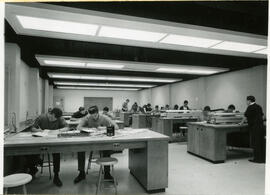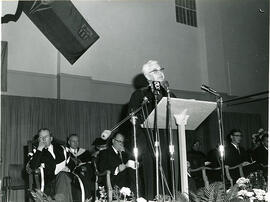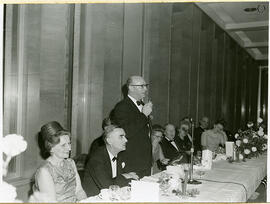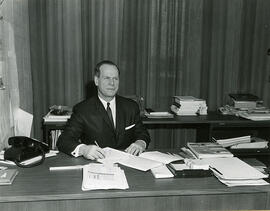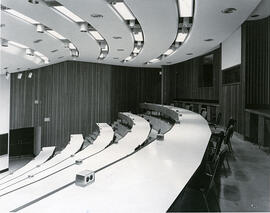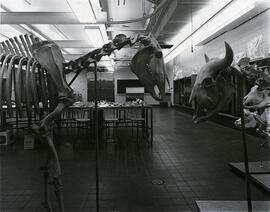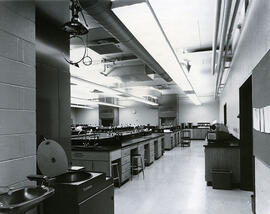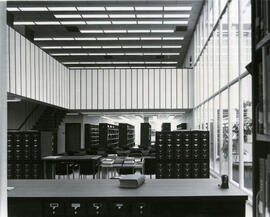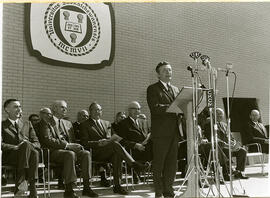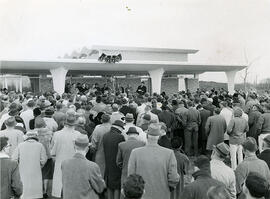- A-4127
- Pièce
- Dec. 1967
Fait partie de University of Saskatchewan Photograph Collection
Students in elementary laboratory in new Physics addition.
Bio/Historical Note: The Physics Building Addition, designed by Kerr, Cullingworth, Riches and Associates, was initially meant to accommodate a student body of 8,000 for a cost of $750,000. However, the growing demands of the Department during the planning stages led to a drastic increase in the scope of the project. Upon completion the Addition added 36,000 square feet of accommodation to the existing 49,000 in the original Physics Building; the foundations and support columns of the Addition are also designed to support an additional two storeys to the building in future expansions. The basement of the Addition originally housed 20 undergraduate laboratories, each with a proposed capacity of 20 students, four advanced undergraduate labs specializing in Modern Physics, Electronics, Optics and 4th Year studies, and research laboratories for masters and doctoral candidates. As well, main machine, woodworking, students’ and electronic workshops were contained here, as was most of the office space. The building also contained two large lecture theatres and classroom space to accommodate 450 to 500 students. The Addition was restricted to two-storeys so as not to cast shadows on the Biology greenhouses to the north. The exterior of the building was sheathed in greystone, with Tyndall limestone used as window trim, door and window mullions, and as mirror wall panels. Grey slate was used in canopy facings, and in steps and the thresholds to entrances.



